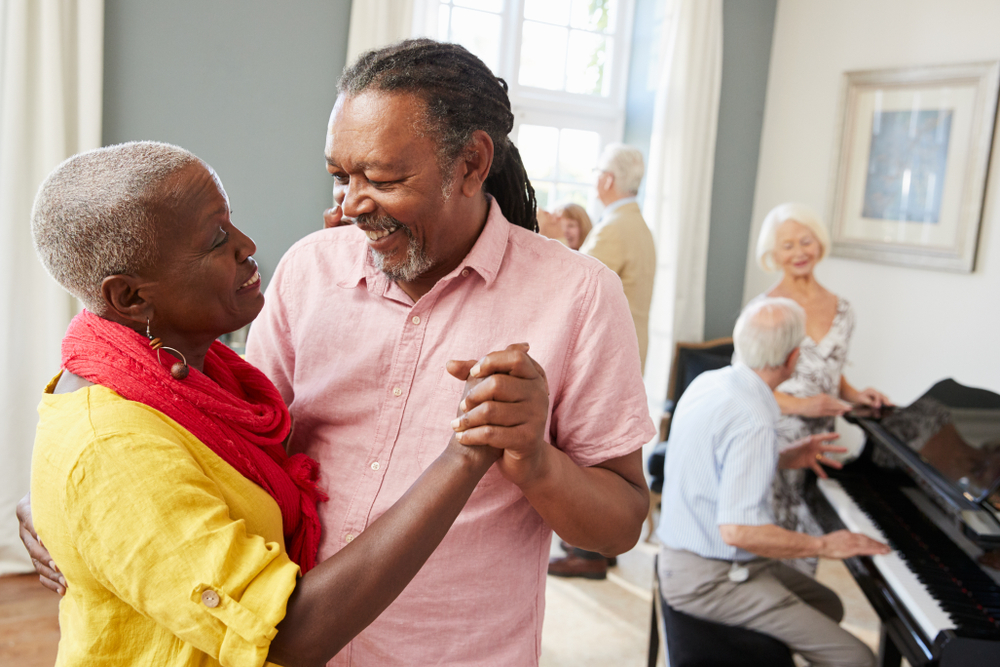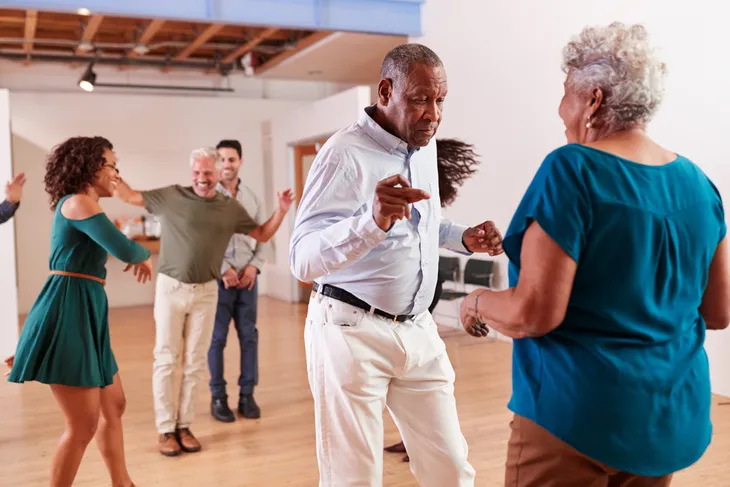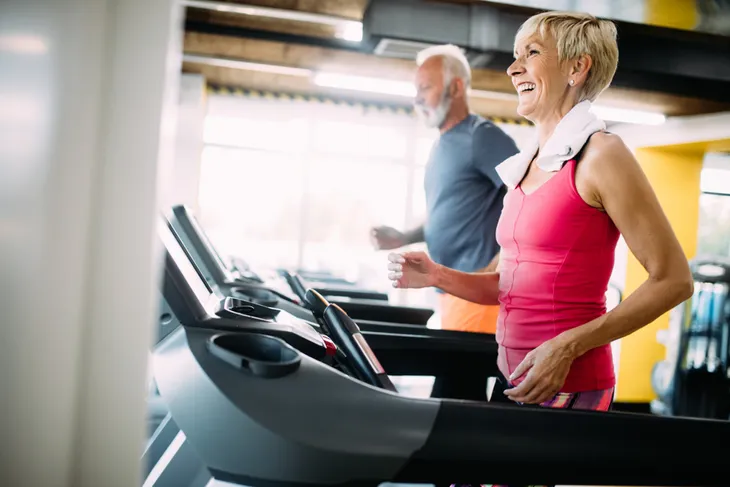The Research Brief is a short take about interesting academic work.
The big idea
Social ballroom dancing can improve cognitive functions and reduce brain atrophy in older adults who are at increased risk for Alzheimer’s disease and other forms of dementia. That’s the key finding of my team’s recently published study in the Journal of Aging and Physical Activity.
In our study, we enrolled 25 adults over 65 years of age in either six months of twice-weekly ballroom dancing classes or six months of twice-weekly treadmill walking classes. None of them were engaged in formal dancing or other exercise programs.
The overall goal was to see how each experience affected cognitive function and brain health.
While none of the study volunteers had a dementia diagnosis, all performed a bit lower than expected on at least one of our dementia screening tests. We found that older adults that completed six months of social dancing and those that completed six months of treadmill walking improved their executive functioning – an umbrella term for planning, reasoning and processing tasks that require attention.
Dancing, however, generated significantly greater improvements than treadmill walking on one measure of executive function and on processing speed, which is the time it takes to respond to or process information. Compared with walking, dancing was also associated with reduced brain atrophy in the hippocampus – a brain region that is key to memory functioning and is particularly affected by Alzheimer’s disease. Researchers also know that this part of our brain can undergo neurogenesis – or grow new neurons – in response to aerobic exercise.
While several previous studies suggest that dancing has beneficial effects on cognitive function in older adults, only a few studies have compared it directly with traditional exercises. Our study is the first to observe both better cognitive function and improved brain health following dancing than walking in older adults at risk for dementia. We think that social dancing may be more beneficial than walking because it is physically, socially and cognitively demanding – and therefore strengthens a wide network of brain regions.
While dancing, you’re not only using brain regions that are important for physical movement. You’re also relying on brain regions that are important for interacting and adapting to the movements of your dancing partner, as well as those necessary for learning new dance steps or remembering those you’ve learned already.
Why it matters
Nearly 6 million older adults in the U.S. and 55 million worldwide have Alzheimer’s disease or a related dementia, yet there is no cure. Sadly, the efficacy and ethics surrounding recently developed drug treatments are still under debate.
The good news is that older adults can potentially lower their risk for dementia through lifestyle interventions, even later in life. These include reducing social isolation and physical inactivity.
Social ballroom dancing targets both isolation and inactivity. In these later stages of the COVID-19 pandemic, a better understanding of the indirect effects of COVID-19 – particularly those that increase dementia risk, such as social isolation – is urgently needed. In my view, early intervention is critical to prevent dementia from becoming the next pandemic.
Social dancing could be a particularly timely way to overcome the adverse cognitive and brain effects associated with isolation and fewer social interactions during the pandemic.
What still isn’t known
Traditional aerobic exercise interventions such as treadmill-walking or running have been shown to lead to modest but reliable improvements in cognition – particularly in executive function.
My team’s study builds on that research and provides preliminary evidence that not all exercise is equal when it comes to brain health. Yet our sample size was quite small, and larger studies are needed to confirm these initial findings. Additional studies are also needed to determine the optimal length, frequency and intensity of dancing classes that may result in positive changes.
Lifestyle interventions like social ballroom dancing are a promising, noninvasive and cost-effective path toward staving off dementia as we – eventually – leave the COVID-19 pandemic behind.
Helena Blumen, Associate Professor of Medicine and Neurology, Albert Einstein College of Medicine
![]()
This article is republished from The Conversation under a Creative Commons license. Read the original article.






